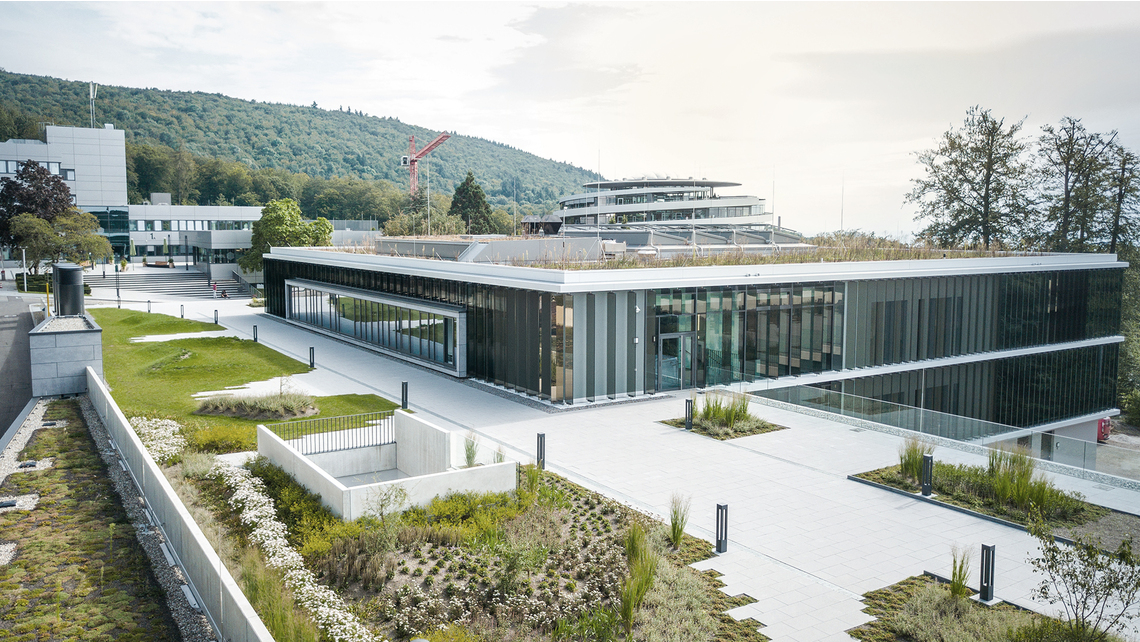European Molecular Biology Laboratory (EMBL)

EMBL, Heidelberg, outside view
Photo: gerstner + hofmeister architecten Part GmbH

EMBL Heidelberg, inside view
Photo: gerstner + hofmeister architecten Part GmbH

EMBL Heidelberg, inside view
Photo: gerstner + hofmeister architecten Part GmbH
Advanced microscope technology
On the south-western flank of the Königstuhl in Heidelberg, the European Molecular Biology Laboratory (EMBL) is building a science centre for electron and light microscopy on its campus, the EMBL imaging centre (IC). At the centre of the open, light-flooded building are ultra-modern light and electron microscopes up to 4 m high, with which up to 300 guest scientists from all over the world will be able to work under the guidance of EMBL experts from 2021. From the upper floor, visitors can look through protected glass panes at the microscopes and the researchers working there.
The utilisation concept places the highest demands on the rooms; for example, some may only have a temperature fluctuation of half a degree Celsius within 24 hours. The thermal envelope is therefore important, especially the thermal separation of the solid exterior components from the insulated building core. The flat roof over the laboratory wing, designed as an inverted roof, fulfils all energy requirements and also serves as an outdoor facility. Glass and prefabricated concrete parapets, which are both set on the raw slab and attached to the sides in front of it, enclose the roof. The highly complex construction can only be technically realised with the Schöck Isokorb® XT type A or type F. The load-bearing thermal insulation element ensures the structural function of the precast parapets and at the same time thermally separates them from the inverted roof and the sensitive rooms below. The Combar® FT assembly support and the Isokorb® type Z complete the system.
European Molecular Biology Laboratory (EMBL), Heidelberg
gerstner + hofmeister architecten Part GmbH, Heidelberg
Schneider precast concrete parts factory GmbH, Philippsburg



